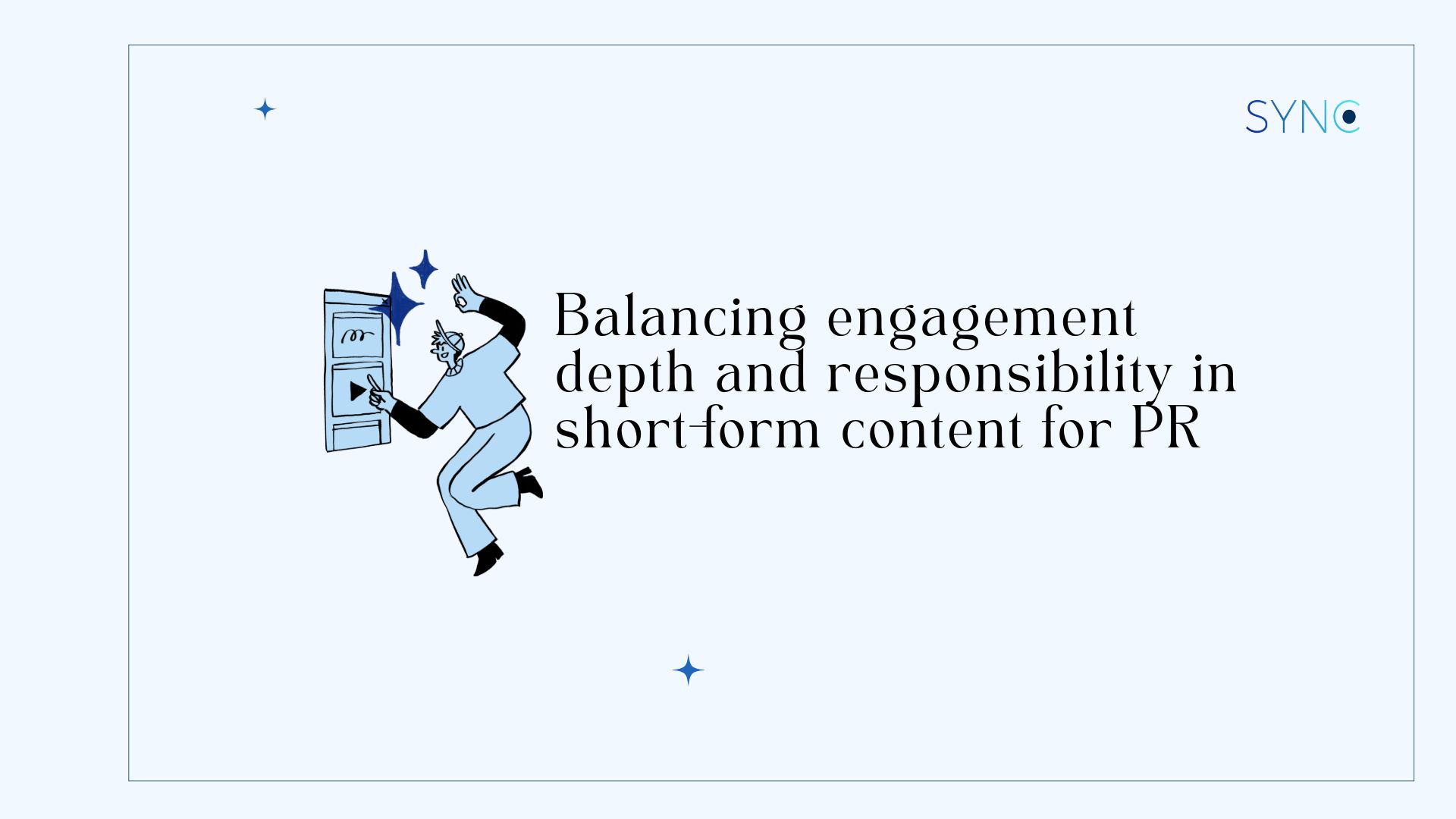The digital age has reshaped how we consume media, with attention spans shrinking and content evolving to match. Platforms like TikTok, Instagram Reels, and YouTube Shorts have turned seconds-long videos into cultural phenomena, redefining how stories are told and messages are delivered thus impacting the world of PR too. Even traditional news outlets have joined the fray, using short-form content to tease longer stories and capture fleeting attention spans.
From the quirky appeal of dance challenges to the absurd hilarity of viral Gen Alpha memes, short-form content dominates our screens. It’s fast, it’s fun, and it’s everywhere—but is it fostering meaningful engagement, or are we trading depth for dopamine? In this article, we’ll explore the rise of short-form content, its impacts on public discourse, and how PR professionals can navigate this shifting landscape responsibly.
The phenomenon of “Brain Rot”
The Oxford English Dictionary announced its word of the year in 2024: brain rot. This term reflects a cultural critique of how social media can erode intellectual curiosity and depth. Viral trends like “Skibidi” or nonsensical Gen Alpha memes rack up millions of views but offer little beyond fleeting amusement. They epitomise entertainment devoid of context, reflection, or deeper meaning.
The “brain rot” phenomenon highlights our collective preference for instant gratification. By prioritising viral trends over substantive content, we risk disengaging from meaningful conversations about societal or cultural issues. What value do we derive from endlessly watching absurd dances or memes if they don’t lead to broader understanding or dialogue?
Anti-intellectualism in the digital age
Short-form content thrives on entertainment, but this emphasis can contribute to the rise of anti-intellectualism. Platforms like TikTok and Twitter often reward sensationalism and simplicity over nuance, creating fertile ground for misinformation and disengagement.
The rapid consumption of short-form content makes it easy for misinformation to spread unchecked. In fast-paced feeds, few users take the time to verify sources or critically evaluate claims. Algorithms amplify this problem by prioritising content that drives engagement, even if it’s misleading.
For example, health-related misinformation flourishes on social platforms, where catchy soundbites or visually appealing videos often eclipse fact-based reporting. This has real-world consequences, from vaccine hesitancy to the normalisation of harmful health practices.
Internet culture also often employs humour as a coping mechanism, leading to dismissive attitudes toward serious topics. Phrases like “it’s not that serious” and “okay,, cringe” are used to undermine genuine discussions about important issues, making it difficult for audiences to engage deeply. Dark humour around serious topics, such as death or illness, is common on social media. While this can provide an outlet for coping, it often trivialises real struggles, making it easier to dismiss important conversations about mental health or grief.
The attention span crisis
One of the most significant concerns surrounding short-form content is its impact on attention spans. Johann Hari, author of Stolen Focus, notes that our diminishing ability to concentrate is not just an individual problem but a societal one. Social media platforms are designed to keep users hooked, with infinite scrolling and autoplay features ensuring there’s always something new to watch.
While this is a boon for content creators seeking visibility, it’s a challenge for those aiming to foster meaningful engagement. Depth and complexity are often sacrificed in favour of brevity and instant gratification. It is argued that this constant stimulation not only reduces our ability to focus but also impairs critical thinking and creativity.
For example, educational creators on TikTok face the challenge of distilling complex subjects into 60-second clips. While some excel at this, many topics are oversimplified, leaving viewers with a superficial understanding that discourages further exploration. The consequences of this “attention economy” reach beyond social media, affecting how we consume information and engage with the world around us.
Strategies for meaningful engagement: Responsibilities as PR professionals
As PR professionals, we play a crucial role in navigating this landscape. While it’s tempting to prioritise virality and trends, we have a responsibility to create content that not only entertains but also informs, educates, and inspires critical thinking. Here’s how:
- Substance over sensation: Craft messages that deliver value. Instead of jumping on every viral trend, focus on creating content that aligns with your brand’s core values and resonates with your target audience.
- Foster dialogue: Encourage two-way communication by posing questions or creating opportunities for audience interaction. Thought-provoking polls, comment prompts, and live Q&A sessions can elevate the conversation.
- Combat misinformation: As stewards of public information, we must fact-check and verify the accuracy of our content. Partnering with credible sources and incorporating data-backed insights can build trust with your audience.
- Use emotion wisely: Emotionally charged content performs well, but it’s crucial to balance relatability with responsibility. Avoid sensationalism and focus on authentic storytelling that resonates with your audience.
- Educate through entertainment: Infuse educational elements into entertaining formats. This approach ensures that even light-hearted content adds value to the viewer’s life.
Final thoughts
Short-form content is here to stay. Its rise has revolutionised how we engage with the world, transforming quick bursts of entertainment into a dominant force in media and marketing. Yet, while it unlocks incredible opportunities for visibility and connection, it also reshapes the way we process information—raising important questions about depth, discourse, and our shared responsibility as creators.
Rather than being swept up by fleeting trends, we must adopt a mindful approach to content creation. By blending entertainment with substance, PR professionals can help audiences navigate the noise and engage with ideas that truly matter. It’s not about rejecting the format—it’s about reimagining it as a tool for connection, education, and positive impact.
So, the question remains: How will you shape the conversation in a world of 15-second attention spans? The future of content is yours to craft. If you’re looking to elevate your content strategy and need expert guidance — drop us a line at hello(a)syncpr.co to start the conversation today!

